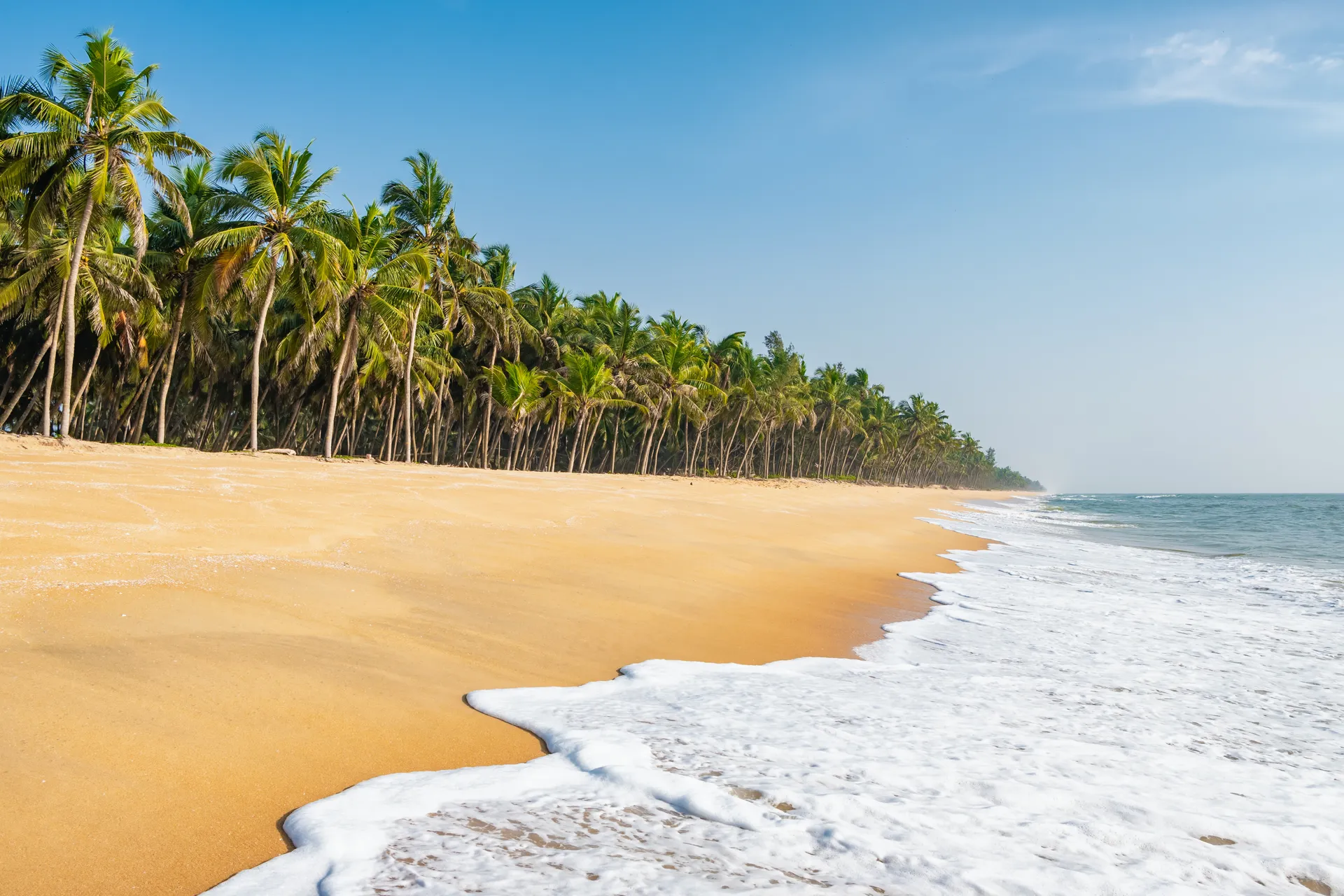
Indian Subcontinent Holidays
From the golden sands of Goa to the serene backwaters of Kerala, this region offers a wealth of experiences. A holiday in India ensures relaxation, adventure, and cultural immersion, allowing you to explore the best of each destination with ease.
Best Regions to Visit in India
Here are some of the top regions to explore on your holiday:
Goa
Goa is famous for its beautiful beaches, lively nightlife, and water sports. Palolem Beach offers a picturesque setting with its crescent-shaped shoreline and calm waters, perfect for swimming and kayaking. Baga Beach is known for its vibrant atmosphere, with numerous beach shacks, bars, and water sports activities like parasailing and jet skiing. Anjuna Beach is popular for its flea market and stunning sunsets. Goa's beaches provide a mix of relaxation and adventure, making it a top destination for beach lovers.
Kerala
Kerala, known as "God's Own Country," boasts some of India's most serene beaches and lush landscapes. Varkala Beach is famous for its dramatic cliffs and natural springs, offering a unique blend of tranquility and adventure with activities like paragliding and windsurfing. Kovalam Beach is a popular tourist spot with its lighthouse and crescent-shaped beaches, perfect for swimming, sunbathing, and enjoying delicious seafood. Marari Beach offers a peaceful retreat with its golden sands and calm waters, ideal for a relaxing day by the sea. Kerala's beaches are perfect for those seeking a serene and picturesque escape.
Best Time to Visit India
The best time to visit varies by region, but here’s a general guide to planning your trip:
Spring (March to May): Mild temperatures and blooming landscapes make it a great time to visit most of India. Coastal regions like Goa and Kerala are perfect for enjoying the early warmth and fewer crowds.
Summer (June to August): This period is the monsoon season in both Goa and Kerala, bringing heavy rainfall. While it may not be ideal for beach activities, it offers lush green landscapes and a unique experience.
Autumn (September to November): Cooler temperatures and fewer crowds make it a great time for cultural and city tours. Coastal areas like Kerala offer pleasant weather for exploring historic sites and enjoying the scenic views.
Winter (December to February): Ideal for winter escapes to warmer coastal destinations like Goa and Kerala, where mild weather allows for beach relaxation and water activities.
India’s diverse landscapes and rich cultural heritage make it a destination worth exploring year-round, offering something special in every season.
Destinations to explore
In Goa, you can enjoy lively beach life and water sports, while Kerala provides tranquil landscapes and unique backwater cruises. Each create a diverse and unforgettable holiday experience.
We look after you all the way with our complimentary in-resort representation services.
Our ABTA and ATOL membership ensures that your holiday is financially protected.
Our customers love our holidays, tours and cruises and we're sure you will too.
Established in 1980, we've been arranging holidays for over 40 years.
Popular hotels in Goa

£760
pp
£632
pp
£777
pp
£698
ppPopular hotels in Kerala

£811
pp
£735
pp
£753
pp
£941
ppYour Indian Subcontinent Questions Answered
Find out more about visiting Indian Subcontinent with the answers to these frequently asked questions.
We're here to help
The best time to visit the Indian Subcontinent is generally from October to March, when the weather is cooler and more comfortable, with temperatures ranging from 20°C to 30°C (68°F to 86°F). This is ideal for sightseeing and outdoor activities, making it the perfect time for exploring the region. Be sure to check the specific climate for each destination, as some areas may experience rainy seasons.
Respect for local customs and traditions is important in the Indian Subcontinent. Dress modestly, especially when visiting religious sites, and remove your shoes before entering temples and homes. In some countries, it’s polite to greet with a "namaste" or similar traditional gesture. Tipping is appreciated, though the amount varies by country and situation.
The ideal length of your trip depends on what you want to see. A short visit of 1-2 weeks allows you to explore key highlights, while 3-4 weeks gives you the opportunity to experience multiple countries or dive deeper into one region. Longer stays of 1 month are ideal for a thorough exploration of the diverse cultures and landscapes.
The Indian Subcontinent is rich in history, culture, and natural beauty, making it a must-visit for any traveller. From the architectural wonders, and the stunning landscapes to the cultural experiences, there’s a wealth of unique experiences waiting to be discovered.
While the Indian Subcontinent is generally safe for tourists, it’s important to take standard travel precautions. Stay vigilant in crowded areas, keep your belongings secure, avoid isolated places at night, and be mindful of local customs. It’s also advisable to have travel insurance to cover any unforeseen issues during your trip.
Yes, the Indian Subcontinent is great for both first-time and solo travellers. The region offers a wide variety of experiences, from cultural landmarks and historical sites to beautiful landscapes and bustling markets. Solo travellers will find it easy to navigate most destinations, though it’s always wise to stay aware of your surroundings and take the usual precautions.
Credit cards are widely accepted in major cities, but it’s a good idea to carry cash for smaller purchases, especially in rural areas. ATMs are available in most places, though it’s recommended to check your card’s fees and limits before withdrawing.
Languages vary across the Indian Subcontinent. English is commonly used in urban areas and tourist destinations, so you won’t have trouble communicating in most places. Learning a few basic phrases in the local language can always be helpful and appreciated.
We use cookies to optimise site functionality and give you the best possible experience. Clicking accept will also allow us to personalise your advertising using marketing cookies. You can find out more about our use of cookies.

